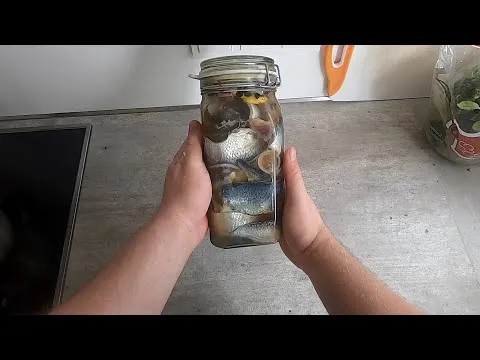Welcome to a journey of traditional Swedish cuisine! I'm excited to bring a taste of Scandinavia into your kitchen with this classic recipe for pickled herring. Though herring can be prepared in many ways, pickling is a favorite in Sweden, with endless variations involving a variety of ingredients, from blueberries and curry to mustard and onions. Today, we'll focus on a simple yet delicious dry brine method that will result in perfectly pickled herring. This recipe is brought to you by World Traveler Cooking and their adventurous YouTube channel, which you can find at https://www.youtube.com/@WorldTravelerCooking.
Ingredients:
- 1 kilogram (about 2 pounds) of herring fillets, skin on
- 1/2 cup salt
- 1/2 cup sugar
- 1-2 tablespoons black pepper (optional)
Equipment:
- Mixing bowl
- Pot or large container for brining
- Refrigerator
Prep Time: 15 minutes
Cook Time: 8 hours for brine, plus pickling time (varies)
Total Time: 8 hours and 15 minutes (plus additional pickling time)
Servings: Approx. 4-6 servings
Instructions:
1. Begin by preparing your dry brine. In a bowl, mix together the salt, sugar, and black pepper (if using) until well combined.
2. Take a handful or two of the dry brine mixture and spread it evenly across the bottom of your pot or brining container.
3. Place a layer of herring fillets over the brine mix in the pot. If there are small bones in the fillets, leave them, as they will partially dissolve during the pickling process.
4. Continue layering the dry brine mixture and herring fillets, alternating until all fillets are coated with the brine. If desired, rotate the fillets 90 degrees with each layer to ensure even brining.
5. Once all the herring is in the pot with the brine, sprinkle a little more of the brine mix on top.
6. Cover the pot with a lid or plastic wrap and place it in the refrigerator overnight. The salt will draw out the water content from the herring, leaving behind a concentrated brine.
7. After 8 hours, or overnight, check the herring. They should be sitting in a liquid brine and somewhat dehydrated. If they are overly dry, they can be rinsed and soaked in water to rehydrate slightly.
8. Once your herring has finished the brining process, you're ready to pickle it. Please refer to your favorite pickling recipe, brine, or infusion for the next steps. Traditional pickling liquids might include vinegar, water, sugar, and a variety of spices such as allspice, bay leaves, and dill.
Cooking Tips:
- The herring fillets at the bottom will be more dehydrated than those on top due to the weight pressing down on them. Keep this in mind when planning your consumption schedule.
- Do not brine for too long to avoid over-dehydrating the fish, which would require additional soaking in water.
- The balance of salt and sugar in the brine not only flavors the fish but also helps to achieve the perfect texture without being overly salty.
Recipe attributed to World Traveler Cooking at their YouTube channel https://www.youtube.com/@WorldTravelerCooking.
#swedish #pickled #scandinavian #recipe
YouTube channel - World Traveler Cooking: https://www.youtube.com/@WorldTravelerCooking
